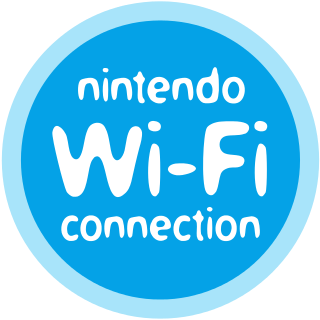
The Nintendo Wi-Fi Connection is a defunct online multiplayer gaming service run by Nintendo to provide free online play in compatible Nintendo DS and Wii games. The service included the company's Wii Shop Channel and DSi Shop game download services. It also ran features for the Wii and Nintendo DS systems.
The Virtual Console is a defunct line of downloadable video games for Nintendo's Wii and Wii U home video game consoles and the Nintendo 3DS family of systems.

Club Nintendo was a customer loyalty program formerly provided by Nintendo. The loyalty program was free to join and provided rewards in exchange for customer feedback and loyalty to purchasing official Nintendo products. Members of Club Nintendo earned credits or "coins" by submitting codes found on Nintendo products and systems, which could be traded in for special edition items only available on Club Nintendo. Rewards included objects such as playing cards, tote bags, controllers, downloadable content, and warranty extensions on select Nintendo products.
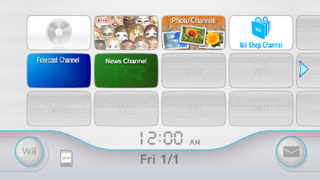
The Wii Menu is the graphical shell of the Wii and Wii U game console, as part of the Wii system software. It has four pages, each with a 4:3 grid, and each displaying the current time and date. Available applications, known as "channels", are displayed and can be navigated using the pointer capability of the Wii Remote. The grid is customizable; users can move channels among the menu's 48 customizable slots. By pressing the plus and minus buttons on the Wii Remote users can scroll across accessing empty slots.

The Wii Shop Channel is a discontinued digital distribution service for the Wii video game console. The service allowed users to purchase and play additional software for the Wii, including exclusive games, and games from prior generations of video games. The Wii Shop Channel launched on November 19, 2006, and ceased operations on January 30, 2019.

A Mii is a customizable avatar used on several Nintendo video game consoles and mobile apps. The name Mii is a portmanteau of "Wii" and "me", referring to them typically being avatars of the players. Miis were first introduced on the Wii console in 2006 and later appeared on the DS, 3DS, the Wii U, the Switch, and various apps for smart devices such as Miitomo. Miis can be created using different body, facial and clothing features, and can then be used as characters within games on the consoles, either as an avatar of a specific player or in some games portrayed as characters with their own personalities. Miis can be shared and transferred between consoles, either manually or automatically with other users over the internet and local wireless communications.

The Japanese multinational consumer electronics company Nintendo has developed seven home video game consoles and multiple portable consoles for use with external media, as well as dedicated consoles and other hardware for their consoles. As of September 30, 2021, in addition to Nintendo Switch, Nintendo has sold over 863.07 million hardware units.

The Nintendo DSi system software is a set of updatable firmware versions, and a software frontend on the Nintendo DSi video game console. Updates, which are downloaded via the system's Internet connection, allow Nintendo to add and remove features and software. All updates also include all changes from previous updates.
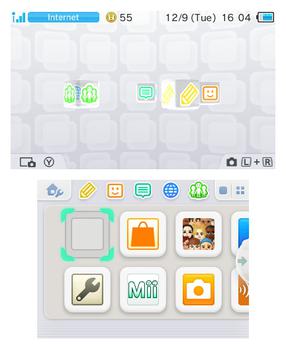
The Nintendo 3DS system software is a updatable operating system used for the Nintendo 3DS handheld system. The Nintendo Switch system software is believed to have evolved from the Nintendo 3DS operating system.
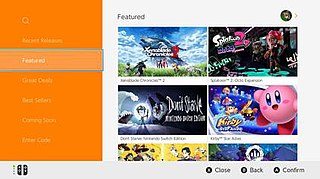
The Nintendo eShop is a digital distribution service for the Nintendo Switch, and formerly available via the Nintendo Network for the Wii U and Nintendo 3DS. The Nintendo eShop was first launched in June 2011 on the Nintendo 3DS via a system update that added the functionality to the HOME Menu. It is the successor to both the Wii Shop Channel and DSi Shop. Unlike on the Nintendo 3DS, the eShop was made available on the launch date of the Wii U, although a system update is required in order to access it. It is also a multitasking application, which means it is easily accessible even when a game is already running in the background through the system software, though this feature is exclusive to the Wii U and the Nintendo Switch. The Nintendo eShop features downloadable games, demos, applications, streaming videos, consumer rating feedback, and other information on upcoming game releases.
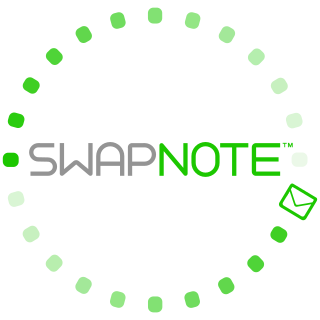
Swapnote, known as Nintendo Letter Box in PAL regions and Suddenly Exchange Diary in Japan, is a messaging application for the Nintendo 3DS family. Swapnote was released worldwide in December 2011 via the Nintendo eShop. It was downloadable at no additional cost and was pre-installed on newer systems. Swapnote was the successor to the PictoChat app for the Nintendo DS line.
The Nintendo Network is Nintendo's online service which provides free online functionality for the Nintendo 3DS and Wii U systems and their compatible games. Announced on January 26, 2012, at an investors' conference, it is Nintendo's second online service after Nintendo Wi-Fi Connection. Former president of Nintendo Satoru Iwata said, "Unlike Nintendo Wi-Fi Connection, which has been focused upon specific functionalities and concepts, we are aiming to establish a platform where various services available through the network for our consumers shall be connected via Nintendo Network service so that the company can make comprehensive proposals to consumers."

The Wii U operating system is the official firmware version and system software for the Nintendo's Wii U home video game console. Nintendo maintains the Wii U's systemwide features and applications by offering system software updates via the Internet. Updates are optional to each console owner, but may be required in order to retain interoperability with Nintendo's online services. Each update is cumulative, including all changes from previous updates.

Flipnote Studio 3D, known in Japan as Moving Notepad 3D and originally announced as the working title/codename, Flipnote Memo, was an animation application developed by Nintendo EAD Tokyo and released in 2013 for the Nintendo 3DS.

Mario vs. Donkey Kong: Tipping Stars is a 2015 puzzle-platform game developed by Nintendo Software Technology and published by Nintendo for the Nintendo 3DS and Wii U. It is the sixth game in the Mario vs. Donkey Kong series and the 200th video game featuring Mario. The game was released worldwide in March 2015 on the Nintendo eShop for all regions, except in Japan. This is the first Nintendo-published title to support a cross-purchase concept, and the first Nintendo 3DS title to support Miiverse stamps. If players buy one version, they receive a free download code for the other version.
SpotPass and StreetPass are communication systems first introduced in the Nintendo 3DS. SpotPass was later incorporated into the Nintendo 2DS, models of the New 3DS and New 2DS, and Wii U game consoles. SpotPass delivers content from the Internet to the consoles, and StreetPass uses local Wi-Fi functionality to exchange data between 3DS systems.
Nintendo Account is a single sign-on user account system used for Nintendo services on various platforms. Introduced in February 2016, it is used as the account system for Nintendo-published mobile apps, as well as the Nintendo Switch console and other services such as My Nintendo.

Miitomo was a freemium social networking mobile app developed by Nintendo for iOS and Android devices. The app, Nintendo's first, allowed users to converse with friends by answering various questions, and featured Twitter and Facebook integration. The app was released in March 2016 for iOS and two months later for Android, launching alongside their My Nintendo service. Despite initially being a critical and commercial success, with over ten million downloads worldwide a month after release, its popularity dwindled soon after and it was ultimately discontinued on May 9, 2018.

Nintendo, a Japanese home and handheld video game console manufacturer and game developer, has traditionally focused on games that utilize unique elements of its consoles. However, the growth of the mobile gaming market in the early 2010s led to several successive fiscal quarters where they were running at a loss. Nintendo, led by president Satoru Iwata at the time, developed a strategy for entering into the mobile games market with development partner DeNA, as a means of introducing their franchise properties to mobile players with a goal of bringing them to buy Nintendo's consoles later. Since 2015, Nintendo has internally developed a number of mobile games, while also publishing games with other developers, including games outside of the initial DeNA partnership. Several of them have entered the top-downloaded games list on the iOS App Store and Google Play stores, earning over US$100 million in revenue in total.
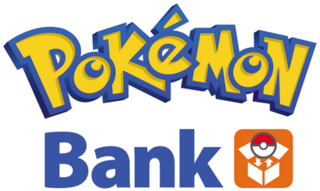
Pokémon Bank is an application for the Nintendo 3DS which was downloadable from the Nintendo eShop before the discontinuation of the storefront's capabilities for the 3DS. Pokémon Bank allows players to store up to 3,000 Pokémon in an online cloud storage service. Players can deposit and withdraw Pokémon from both physical and downloaded versions of compatible games, allowing players to exchange Pokémon between them. An additional application called the Poké Transporter has connectivity with the software, allowing the transfer of Pokémon from Pokémon Black and White and its sequels to Pokémon X and Y and Pokémon Omega Ruby and Alpha Sapphire. After the release of Pokémon Sun and Moon, the software was updated to be compatible with it. Once a Pokémon had been deposited into these newer titles, it could not be transferred back to its original game.
















